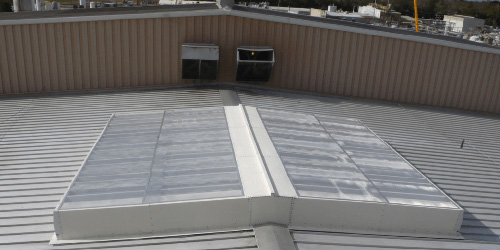Types of Natural Ventilation

Natural ventilation is a form of climate control that works without electricity or moving equipment. This type of ventilation is growing in popularity because of the potential energy and cost savings. Natural ventilation has low operational and maintenance costs. Each unit uses no electricity to run and has no moving parts to break or wear out. There are many types of natural ventilation, read on to learn more.
Natural ventilation cools the air within a building during the warmer months of the year. With proper design, different buildings, even those in climates that are extremely warm and humid can benefit from a natural solution.
The design of the building, including the amount of sunlight it receives, its level of insulation, internal heat load, and the layout of the interior space, all impact a ventilation system’s effectiveness. Designing an effective ventilation system requires many elements.
These types of natural ventilation are not a new idea; actually, they have been in use for thousands of years. Using the natural flow of air to control air circulation inside of a building, can have a significant impact on building conditions and worker comfort.
Building Ventilation
There are several two main ways to ventilate a building naturally. This includes wind ventilation, where the wind that hits a building is directed through the building’s air ducts rather than around it, stack ventilation, where an air stack to remove warmer air allowing the lower area to be replaced with cooler air, and any and every combination of the two.
An experienced ventilation designer will know which ventilation type is optimal for a given building. They will also know tricks and tips to help improve the effectiveness of a natural system. This includes opening dampers during the night. This removes the warm, stagnant air that accumulates during the day and creates a lower starting temperature. The key is to think of the building’s complete ventilation throughout the day, not just when it gets hot. And of course, it does this all with little or no energy use.
The U.S. and the Types of Natural Ventilation
The US has not taken to this kind of ventilation the way that European, and Australia have. This is for any number of reasons including the size and climate diversity throughout the U.S., the fact that Americans have different temperature requirements, and even the fact that they have grown accustomed to having complete control over building temperatures. Also, U.S. government policy has yet to enact the sustainable building guidelines or requirements. Many other areas already have these requirements.
The United States is more dependent on air-conditioning than the rest of the world. However, some building designers are beginning to incorporate more natural and sustainable cooling methods into their designs. They are doing this because they want to reduce energy costs and minimize the impact on the environment. Ultimately, the focus is on looking at many different types of natural ventilation and choosing the right system for each project.
